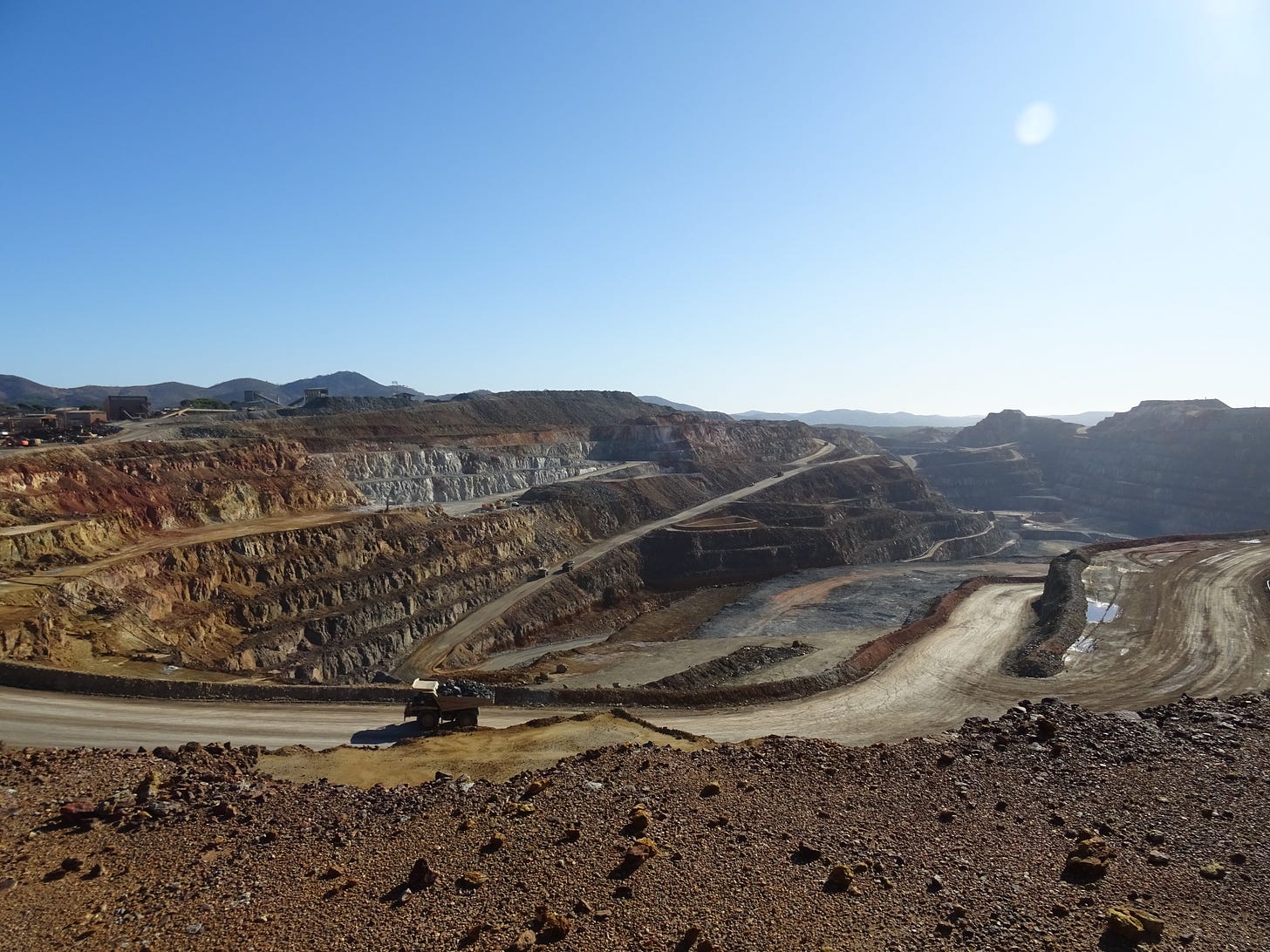Mining in Europe - An overview
The Raw Materials Act of the European Union has now come into effect, setting ambitious goals for domestic production. But which metals are currently produced in Europe? I'll provide an overview.
In this article, I'll provide an overview of what's happening in and under Europe. The level of this article is beginner-friendly, aimed at helping readers who aren't familiar with the topic to get an understanding of the subject. I won't be discussing much exploration, development projects, coal, salt, or industrial mineral mines, as this would be too extensive for this article. However, I will explain some geological fundamentals to help readers better understand the topic. On a geopolitical level, I've excluded Russia, Belarus, and Ukraine because the latter is currently in a war zone, and we'll see how this situation unfolds. Russia and Belarus form another economic bloc, which is no longer relevant for supplying Europe with metals. While countries like Bosnia, Serbia, and Norway are not part of the EU, they have a significant trading volume with the EU, making their mining industry relevant for the European metal supply.
In the current geopolitical climate, it's becoming increasingly clear that it's not a viable strategy for the EU to be heavily dependent on raw material supplies from other blocs. The EU has put itself in a precarious situation: New mining projects face immense bureaucratic hurdles and environmental restrictions, while public opinion has turned against mining due to media portrayal of the industry as dirty, greedy, and evil. Operating costs for mines are generally perceived as high, and many mines in Europe have had to close in recent decades.
As a result, the EU managed successfully to get more and more dependent on foreign supply of all sorts of raw materials, in some cases it has a 100% dependence on Chinese imports. Since geopolitical geniuses like Josep Borrell and Ursula v. d. Leyen managed to sever relations with the EU’s largest raw material suppliers - Russia and China - people in Brussels got the message that something needs to be done. And what does that mean for the bureaucratic giant? Right, they put a new law into place: The European Critical Raw Materials Act. It states the following objectives for domestic production:
At least 10% of the EU's annual consumption for extraction,
At least 40% of the EU's annual consumption for processing,
At least 15% of the EU's annual consumption for recycling,
Not more than 65% of the Union's annual consumption of each strategic raw material at any relevant stage of processing from a single third country.
All of these rather ambitious goals are to be achieved by 2030 which [has a look at the watch] is in only 6 years. While the goals themselves are reasonable to diversify supply chains and reduce risks, the timeframe is relatively optimistic. Since it's unlikely that current exploration or early-stage projects will come online within this timeframe, and many advanced projects are struggling to obtain permits, one can question whether these goals will be achieved by 2030. As a result, the mines currently in operation become even more crucial, as they are what we have..
Some history first
I’ll keep it short, no worries.
While Europe has been relatively quiet in recent times regarding mineral exploration, mining, and major discoveries, this is a relatively recent phenomenon. In fact, since ancient times, Europe's mineral deposits have been exploited and have played a significant role in the progress of civilization. No Bronze Age without copper and tin, no Iron Age without iron, and no industrialization without coal – all made possible by locally available resources.
Europe's complex geological history has resulted in a diverse range of mineral deposits. For example, Germany, now considered resource-poor and devoid of mining, was once known for its rich silver deposits in Saxony, the Harz Mountains, and the Black Forest during the medieval period. Starting in England, the industrial centres of Europe developed usually right above rich coal deposits: NE France, Belgium, the Rhein-Ruhr area, Bohemia, Upper Silesia, Donbas. These industries were supplied by numerous base metal mines throughout the continent, from Sweden's Falun in the north to Spain's Rio Tinto in the south, and from Cornwall in the west to Banska Stiavnica in the east.
Another often overlooked aspect is the former Soviet Bloc, which aimed to be as self-sufficient as possible in terms of resources. Importing resources was expensive and required foreign exchange, so wherever possible, local deposits were exploited. As an East German, I can provide an example from my region: In the 1980s, the country was the third-largest uranium producer, operating two tin mines, two nickel mines, a few copper-silver mines, and producing various byproducts from these ores. Today, lignite and salt mines are the only remaining mining operations. Similar stories can be told about the other former socialist states.
This means: There is mineral potential, there is old data and there is the high possibility that the old miners haven’t found it all and left something for us to discover. This little historic overview is just for the context and to put things into perspective. If you like to know more about mining history in Europe, please let me know in the comments (I like that stuff and am happy to write more about it).
Mines in Operation
Let’s get to the actual topic. This is a great time for another map, right? Right! Here you go:
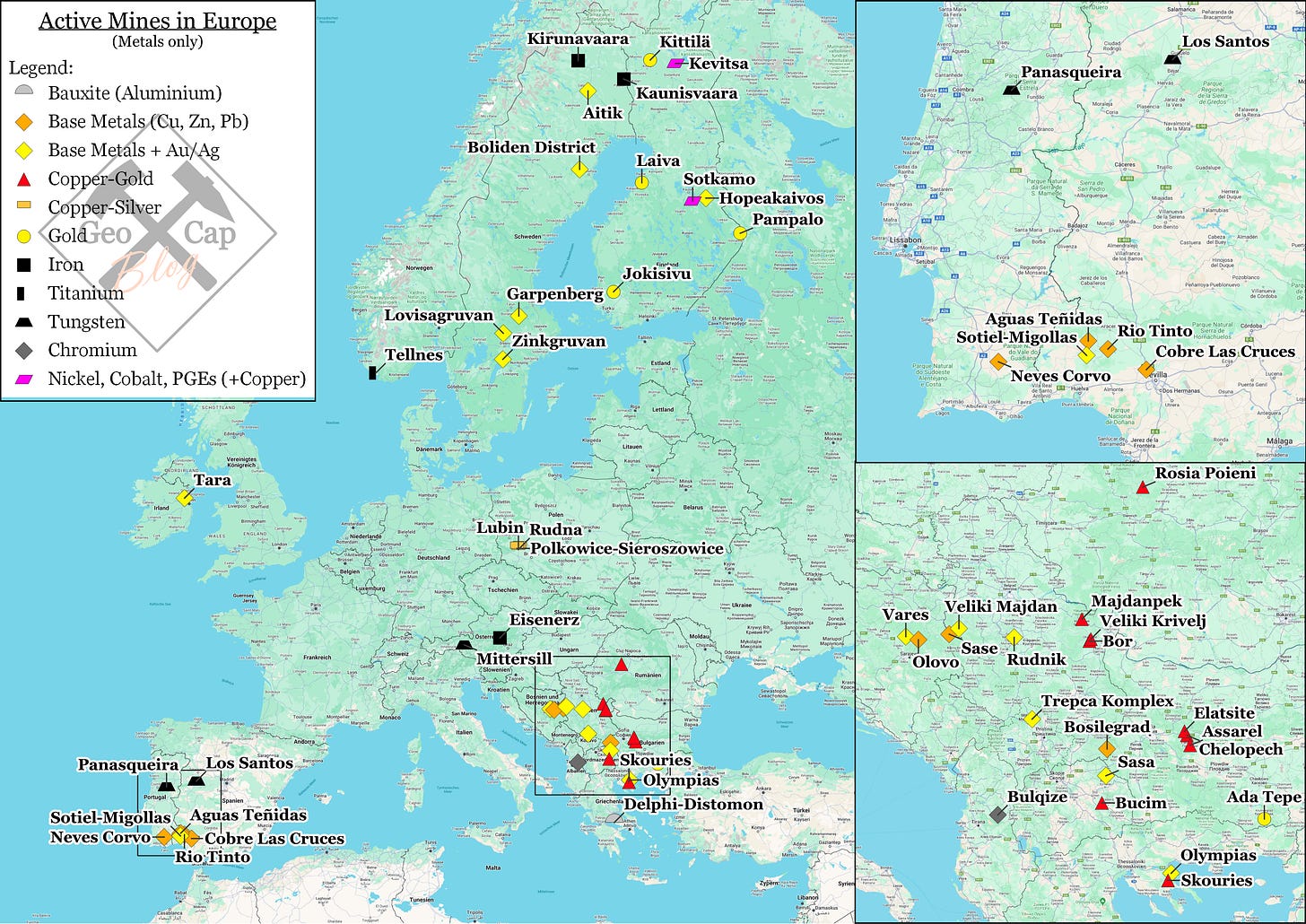
First, it’s actually quite a lot and once more while writing my articles, I learned something as well. Europe is not devoid of minerals and this map shows that mining is possible, even in countries like Sweden or Austria with high salaries, high environmental standards and lots of bureaucracy. This is a positive thing. Another aspect that is quite pronounced is the clustering: Southern Spain, the Balkans, Scandinavia. That has of course geological reasons, but historical and political ones as well: If a mine already exists nearby, social acceptance is higher and permitting usually is much easier. And - of course - the best place to look for a new mine is near the head frame of an existing mine.
Spain & Portugal
The southern regions of both Spain and Portugal host the Iberian Pyrite Belt, a geological formation that is rich in Volcanic-hosted Massive Sulphide (VMS) deposits. These deposits are abundant in copper, zinc, lead and sometimes, silver & gold. The most well-known deposit in this area is Rio Tinto, which has been mined since ancient times and is responsible for the name of one of the largest mining companies today, Rio Tinto PLC. In the 19th century, Rio Tinto (the company) exploited the deposits in the area, making a significant fortune.
In Portugal, the Neves-Corvo mine started production in the early 1990s and also mined a tin orebody for a few years, which is now being exploited. The Iberian Pyrite Belt hosts numerous other mines, as well as many exploration and development projects, making it a significant mining hub in Europe.
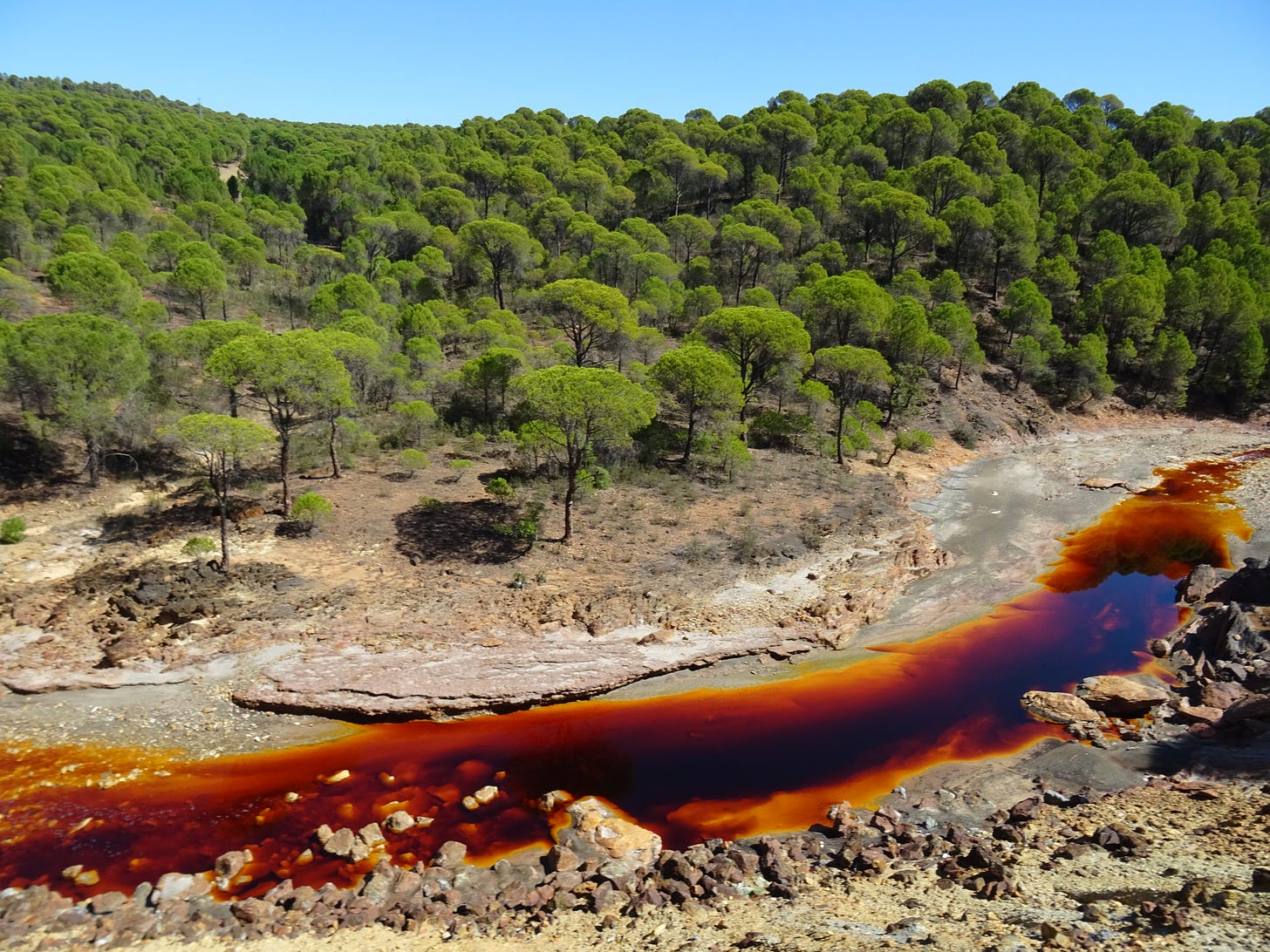
A bit further north, the Variscan Orgeny (a mountain-building process that took place between 400 and 300 million years ago and formed the geological backbone of Europe) produced many granites, enriched in tungsten (W), tin (Sn) and lithium (Li). Currently, there are two operating mines in the region: Panasqueira in Portugal and Los Santos in Spain. These mines primarily produce tungsten but also yield minor amounts of tin, and in the case of Panasqueira, copper and zinc as by-products. Granite-related lithium mineralizations exist as well, such as the Seixo Amarelo quarry that exploits Li-rich mica for the ceramic industry and the Barroso lithium project (for batteries) that currently struggling due to protests by the locals.
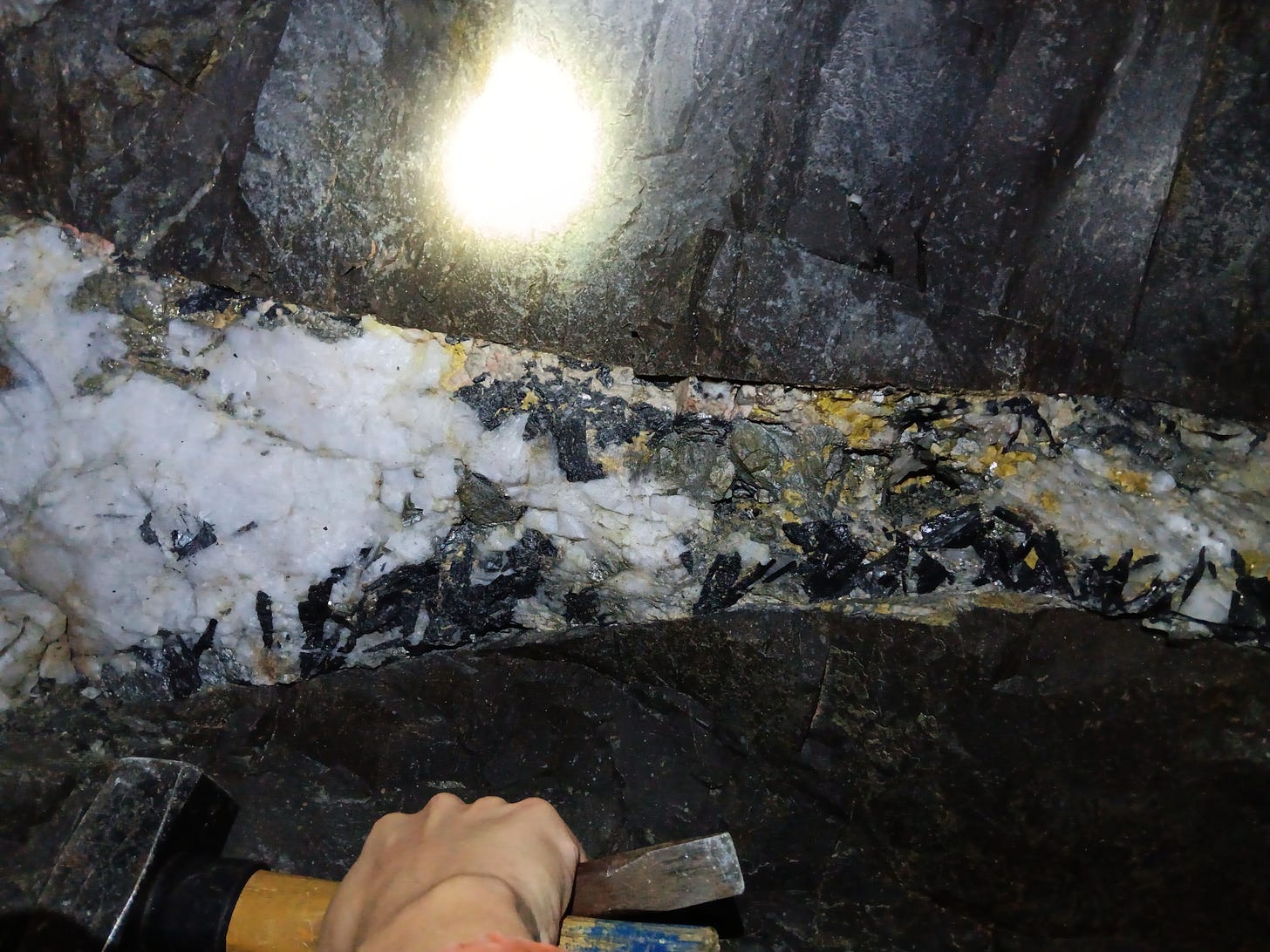
The same geological belt is responsible for the Sn-W deposits of Cornwall/UK, Brittany/France and the Erzgebirge/Krušné Hory in Germany and Czechia.
Austria
Austria’s geology in made up - in very simplified terms - of older metamorphic Variscan rocks and younger sediments. When the Alps formed, both units had their fair share of fun and all sorts of things happened to them. The Variscan example here is the Mittersill tungsten mine: It mines a metamorphically overprinted orebody that was discovered only in the 1970s by a professor who had an idea and found some cool rocks. The mine started as an open pit on one side of the valley and now operates underground on the other side - within a national park! A great example how both things can work together.
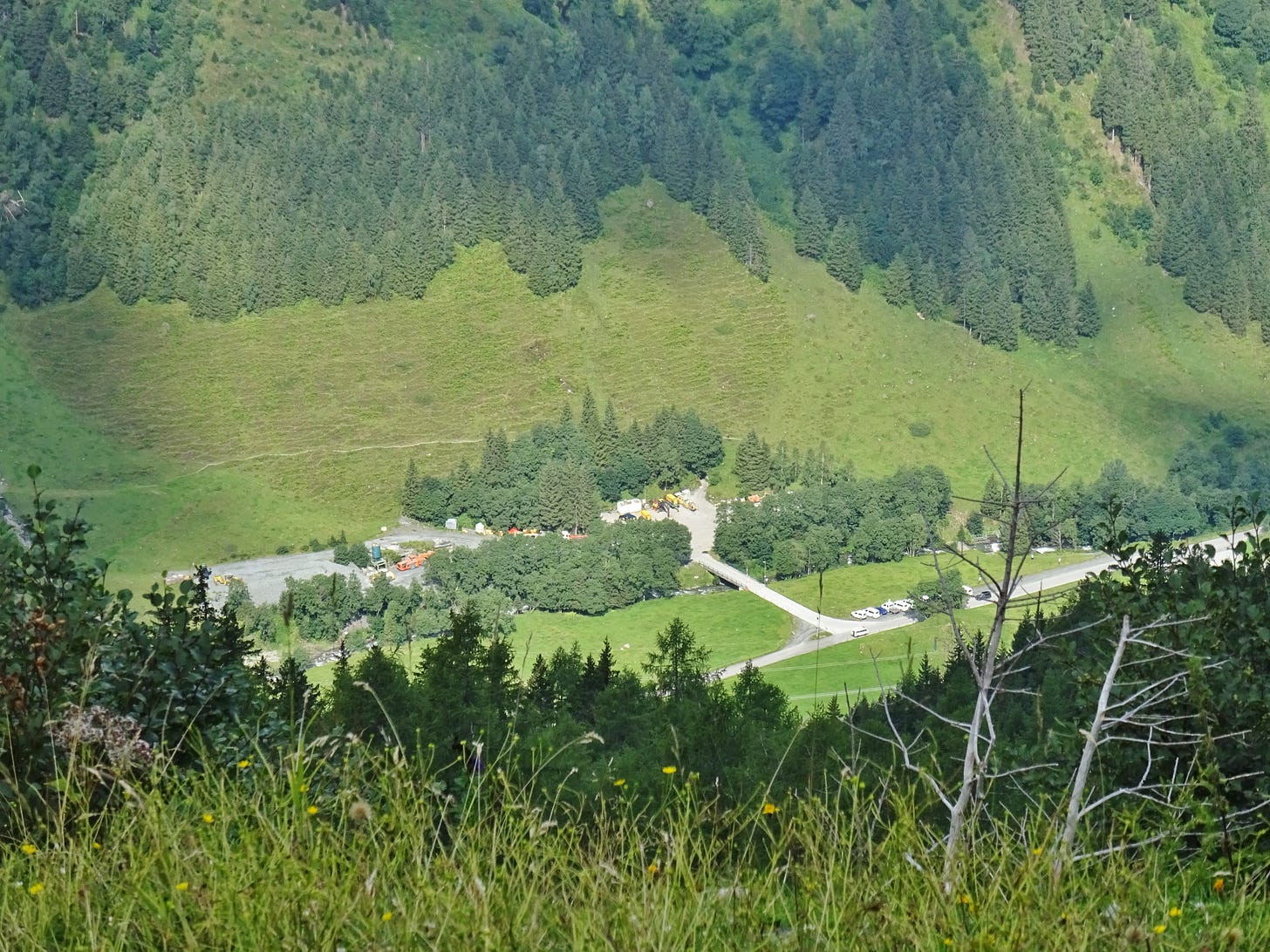
The other mine is the Erzberg (‘Ore Mountain’) near Eisenerz (‘Iron Ore’). You guessed it right, it’s a big iron mine: A limestone was metasomatically overprinted (that means fluids changed the mineralogy of the rock) and introduced lots of iron to the limestone, forming the mineral siderite - an iron carbonate. This mineral is easy to process, and our ancestors figured this out already in the medieval (if not earlier) and mining here is documented as early as the 11th century. It is also the largest siderite deposit in the world.
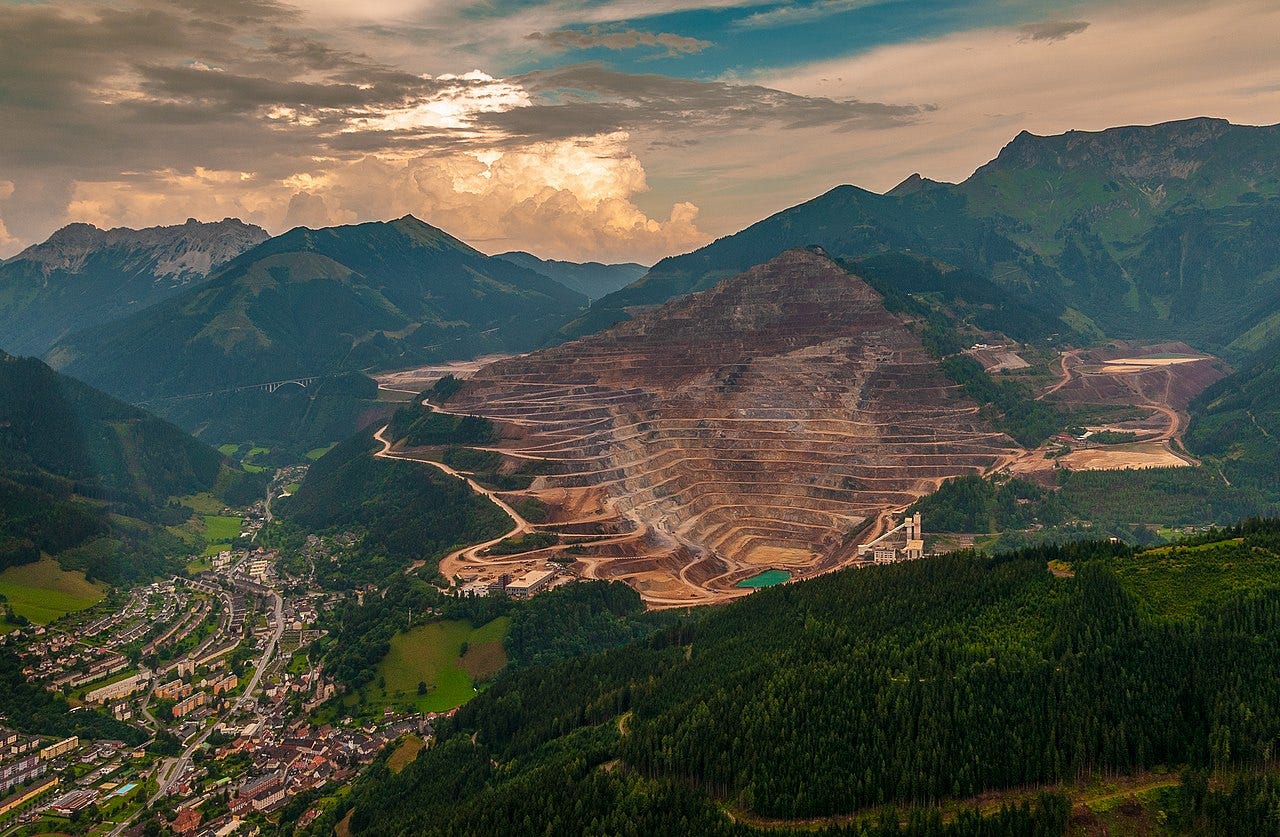
The Balkans
Similar to Austria, the geology of the Balkan region is significantly influenced by the Alpine Orogeny. Due to its large size, the Balkans exhibit a high degree of heterogeneity, with a distinction between older Variscan rocks and younger sediments. Oceanic crust also plays a role in this region's geological makeup, aswell as volcanic activity.
Copper porphyries, a deposit style famously found in Chile, are predominantly located in eastern Serbia, Romania, Bulgaria, and northern Greece. These large, low-grade deposits contain copper, gold, and sometimes silver and molybdenum, and are associated with volcanic activity. These deposits are part of the Tethyan Belt – a series of mountains and mineral deposits related to the subduction of the Tethys Ocean, which stretched from Slovakia as far as Indonesia. A similar process takes around the Pacific today; hence we see many similar mineralizations there.
Associated to these copper porphyries and volcanic activity, there are often Au-Ag and also Zn-Pb-Ag hydrothermal vein systems. The border area between Greece and Bulgaria is particularly rich in gold mineralizations. I’ve been to northern Greece last year, and I was surprised how much potential that areas has. Greece is also the only country in Europe to my knowledge that mines bauxite and produces domestic aluminium.
Further west, in Albania, North Macedonia, Kosovo, Eastern Serbia and Bosnia, the mineral deposits are mostly base metal deposits with or without silver of the skarn/CRD-type (meaning a limestone was replaced by base metal sulphides, more or less). These limestones were deposited on thinned continental crust with some oceanic crust in between. In this case, not all the oceanic crust is subducted, and it sometimes reaches the surface - we call them ophiolites. Ophiolites are a common feature in the Western Balkans and host numerous chromium and some nickel deposits. While chromium mining has seen better days, Albania is still home to at least one producing mine.
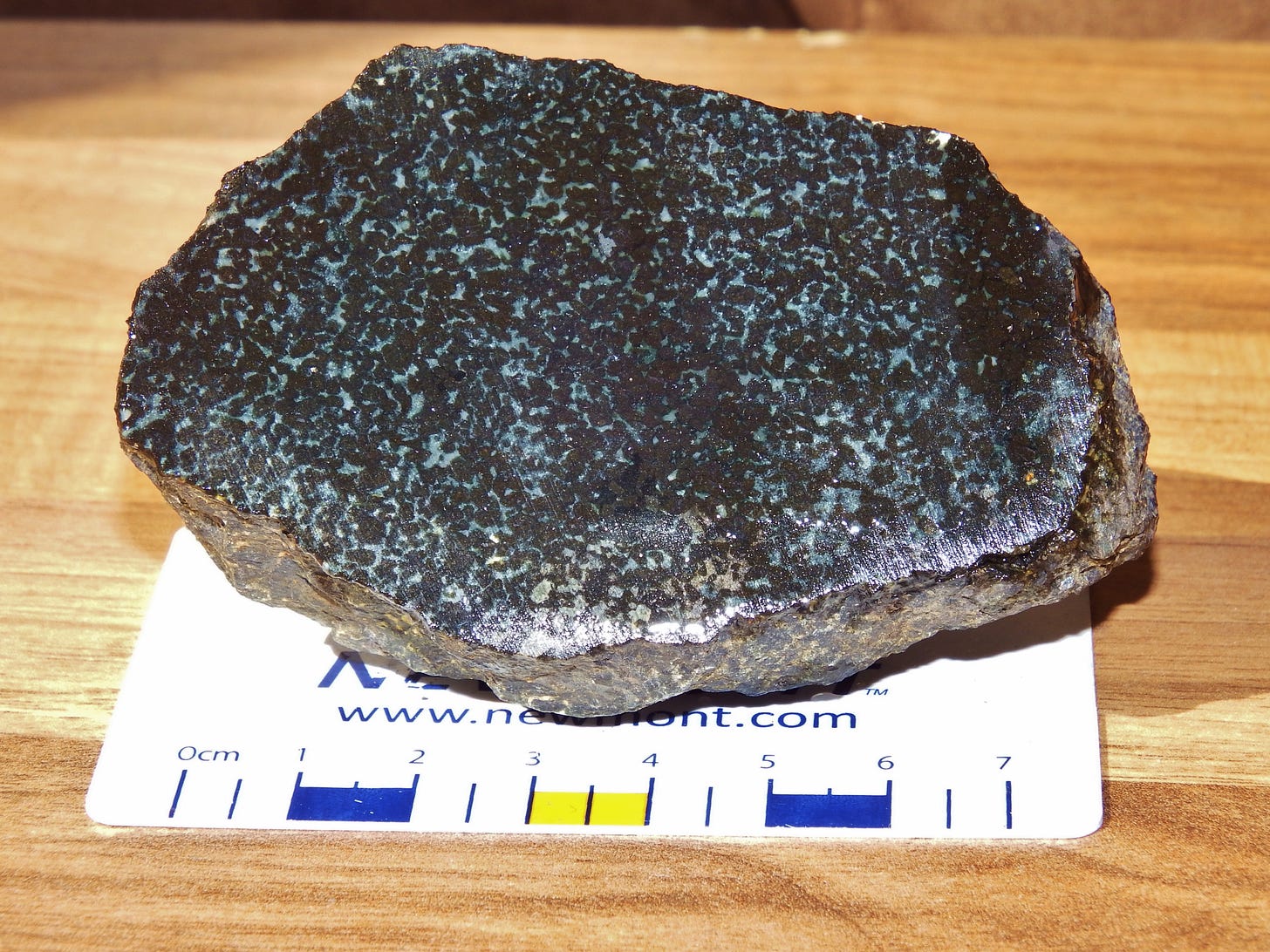
Poland
Taking about the Polish Kupferschiefer - one of my favourites! Was ist Kupferschiefer? Well, that is German and means copper schist. While it contains copper (and also silver, lead, zinc and some other metals), it is actually a mudstone and not a schist. It is a sediment and not a metamorphic rock. This sediment formed on the floor of a shallow ocean that covered northern Germany, Poland, and the North Sea area around 270 million years ago. The ocean eventually dried up, leaving behind salt and earning the name Zechstein Ocean (Stein meaning "rock" and Zeche meaning "mine," often associated with salt or coal mines).
Before drying up, the ocean had another problem: It had no currents that transported oxygen to its bottom. So all the dead plants and animals accumulated at the seafloor, forming a very carbon-rich mudstone. Later, this carbon formed the perfect chemical trap for metal-bearing fluids from deeper parts, enriching the Kupferschiefer with all the juicy metals. But typically, it is only 30 to 50 cm thick. In medieval times in Eastern Germany, that wasn’t a big problem. But later, under socialism, mining of these rocks was expensive, so all mines were shut down after the reunification in 1990. And in Poland?
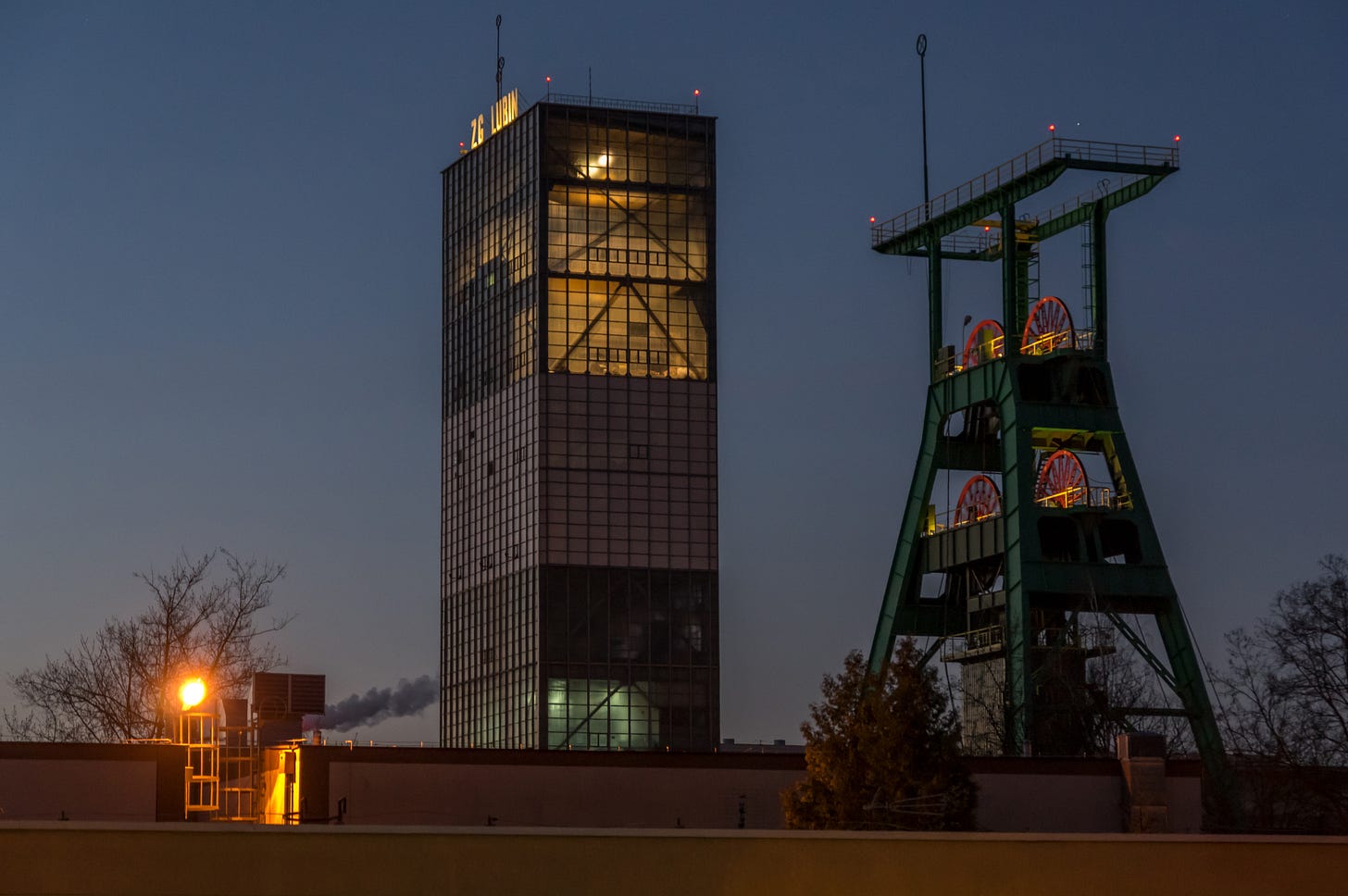
Well, in Poland, there is no surface exposure of these rocks. In the 1950s, just a few years after Poland was moved westwards by Stalin, some Polish geologists had the idea that maybe, the Kupferschiefer exists below what recently became Western Poland as well. And they were right! They found one the largest copper resources on the planet. In the 1960s and 1970s, production was ramped up. Unlike the German Kupferschiefer, the Polish one has strata of sandstone right beneath it. Between the sand grains, the was space for mineralisation. Hence, in Poland the mineralised strata is not 30-50 cm, it is 1 or 2, sometimes 5 m thick. And that makes great economics. The reserves are huge and the operator, KGHM, is a fairly large company. KGHM is the 2nd largest silver and 7th copper producer globally, but that includes their US and Canadian assets. Still, the Polish assets alone make Poland a silver producer No. 6 in the world. Not bad, and I guess many of you don’t have Poland on the radar when it comes to copper and silver.
I will very likely write an extra article about this thing at some point.
Scandinavia
Scandinavia is a bit different: It is much (c)older. As a rule of thumb, one can easily say that most rocks there are between 1 or 2 billion years old. While the area has been tectonically stable for the last ~500 million years and could watch the southern parts of Europe being welded together from a safe position, that was not always the case. Many, many mountain forming processes affected the area before. And that makes things very complex.

To give a broad understanding, there are basically four important types of deposits:
1) Again, VMS base metal +- silver/gold. Older, as in Portugal and Spain, but still very similar. These deposits are located mostly in central and northern Sweden. Here, the Boliden deposit was the birthplace of the eponymous company.
2) Further north, in Lappland, there is the famous Kiruna mine (actually Kirunavaara, but the short version is more common). It is the largest iron ore mine globally and operates now as an underground mine, producing ~27 million tons of ore annually. Since 1900, when mining started, around a billion tons have been exploited. Kiruna was actually the reason why the Germans invaded Norway in WWII: The processed ore is transported via a railway to Narvik, an ice-free port in Norway. The German industry needed the Swedish iron (and the neutral Swedes needed a good customer). To secure the port from the British, the Germans captured it first. In other words: It is quite an important mine. In the wider area, there are many similar deposits, some are also mined. Geologically speaking, it is a HUGE magnetite vein (or intrusion?) and the details of the genesis of these things is still a matter of discussion among researchers.
3) The third important deposit type is orogenic gold. What is that? Well, to bake the orogenic gold cake, you need basalts. These basalts are ancient and since the young earth in its youthful confusion wasn’t so sure where to put the gold, so some of it went into the basalt forming on the floor of the oceans. When the early continents collided, these basalts were metamorphosed (=cooked up). When this happened, the gold could escape the basalt (now metamorphosed to greenstone) and precipitated in quartz veins, thus forming the typical orogenic gold deposit. These are found mostly in northern Finland and are very similar to what you would find the in i.e. West Australian or Canadian Greenstone belts.
4) The fourth type can be summarized as ultramafic intrusion related. Magmas coming from deeper crustal level with low silicium content (granite, on the other side of the spectrum, has very high Si content) formed intrusions. When these things cool down, some minerals form first and sink to the ground of the magma chamber. Here, you can find layers of chromite and also nickel-cobalt sulphides with platinum group elements (PGE). The best example globally is the Bushveld complex in South Africa, but in mostly northern Finland, smaller examples can be found. It is similar to the ophiolite-hosted nickel and chromite deposit, but a bit different in detail.
Summary & further outlook
Europe has producing mines and all that comes with it: a supplying industry, technical know-how, a qualified workforce, etc. So the situation is not as bad as one might think, and even some critical metals are extracted domestically (mostly copper), but also tungsten and some nickel, cobalt and PGEs. But is that enough to meet the objectives of the Critical Raw Materials Act? I think I positioned myself greatly to answer that question in detail in another article.
You also may have noticed that I described geological, ore-forming processes here that happen on a regional scale. In other words: Just like a mushroom in a forest or a beer in my fridge, mineral deposits rarely occur alone. And while miners from past decades and centuries did a good job, they usually only found what was outcropping at the surface, often by pure coincidence. A lot of the described areas have never seen modern exploration, and if so, it was likely limited around known deposits. And I only mentioned areas here where active mining takes places, which naturally only shows a part of the whole picture. Until very recently, no one really cared about lithium or rare earths, so there are no decade old mines, but there are some interesting (and advanced) projects nevertheless. Most exploration today is focussed on Scandinavia, which - due to its vast size and hostile climate - remains underexplored.
I hope this article could give you a basic understanding of Europe’s mining landscape and its mineral potential. Since my blog is relatively young, and I do not really know my readership, please let me know in the poll below or in the comments what you would like to read about in the next articles. As mentioned above, I plan to write a follow-up diving into the critical metal supply of Europe, including some development projects that are relevant. Also, in that context, it makes sense to present some interesting districts in more detail.
But when I’m reading the statistics, you liked the tin articles quite a bit and I also have some more ideas about Argentina. So far, I see this blog only as a hobby and a nice way to write down my ideas and force myself to dive deeper, but of course, I also want to provide some value for my readership as well.
So let me know what you think & please leave me a like. See you next time!

